Emerging Brands Are Giving Men’s Skirts an Air of Machismo Gorpcore and Utility Influences
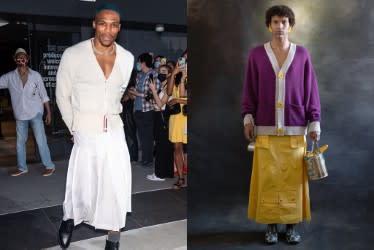
Menswear might be embracing softer airs, but ironically the skirts are toughening up.
It’s safe to say guys wearing them entered the mainstream fashion consciousness on actors and athletes like Danny Levy, Pete Davidson and Russell Westbrook, all of whom worked their calves for the cameras in Thom Browne’s preppy knife-pleated pencils.
More from WWD
Cutouts Are Trending at the 2024 ESPY Awards: Lindsey Vonn, GloRilla, Livvy Dunne and More
John Hardy and Todd Snyder Team on Nautical-inspired Men's Jewelry Collection
While Browne certainly didn’t invent the male skirt (notable pioneers include Jean Paul Gaultier, Malcolm McLaren and Rei Kawakubo) his role in catapulting it to the major trend it is today is undeniable. And it’s only gaining traction. According to data from fashion search engine Tag-Walk, skirts or skirt-adjacent items — be them skorts, smocks, wraps or waist-aprons — were up 229 percent on the spring menswear runways compared to last fall.
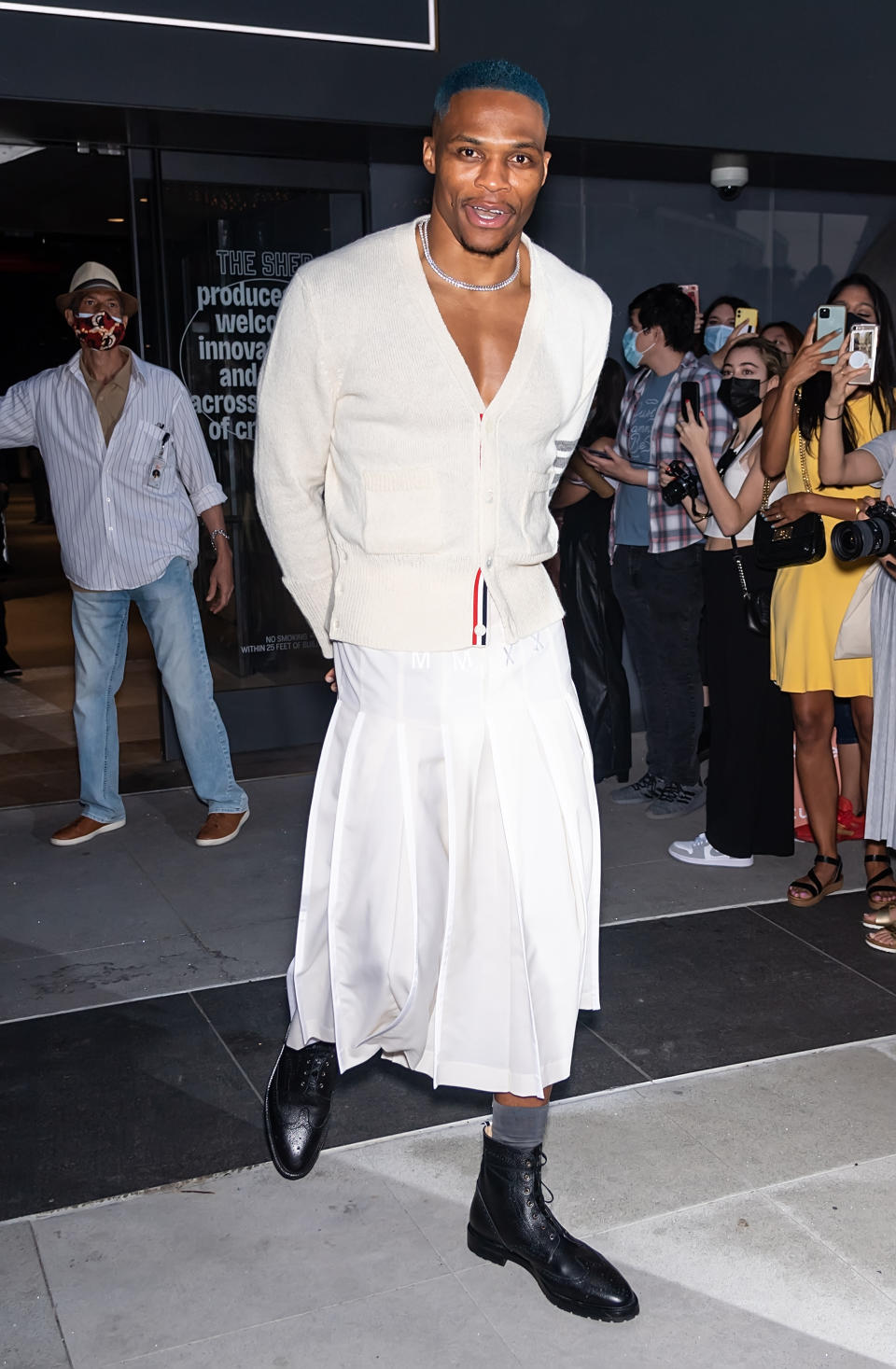
But as the tailored office skirt grows less taboo, emerging designers are catering toward a different kind of working man with gorpcore and utilitarian accents that fit blue-collar needs.
Federico Barassi, vice president of menswear buying for online retailer Ssense, called it an “an interesting shift” in this still niche category, but one that fits with where his 18-to-34-year-old customer is at given the momentum of genderless dressing.
“A preppy, easy-to-wear skirt is a great place to start,” he said, “but once a customer gets more comfortable with the idea, the natural next step might be to try some more eye-catching or rugged styles.”

By refashioning the ever-popular cargo pant into skirts, many designers lent a newfound air of machismo to the traditionally feminine silhouette. Cargo skirts were seen at Hed Mayner where patch pockets bulked up knee-length versions in denim, while floor-grazing ones at Bluemarble came printed in camouflage. For his Pitti Uomo debut, Florentine designer Francesco Tolotta chose yellow and red for two trumpet-shaped versions.
The colors, he said, “remind me of trucks, cranes, and everything industrial.” Accessorized with tin can bags, Tolotta nodded to the humble painting profession.
Cargo skirts in equally traffic-stopping shades of blue and purple stomped the runway at Simon Cracker. With Neolithic-looking drapes held up by adjustable draw cords and unfinished hems, codesigners Simone Botte and Filippo Biraghi referred to them as “gladiator” skirts in homage to ancient Roman warriors who donned loincloths for agility.
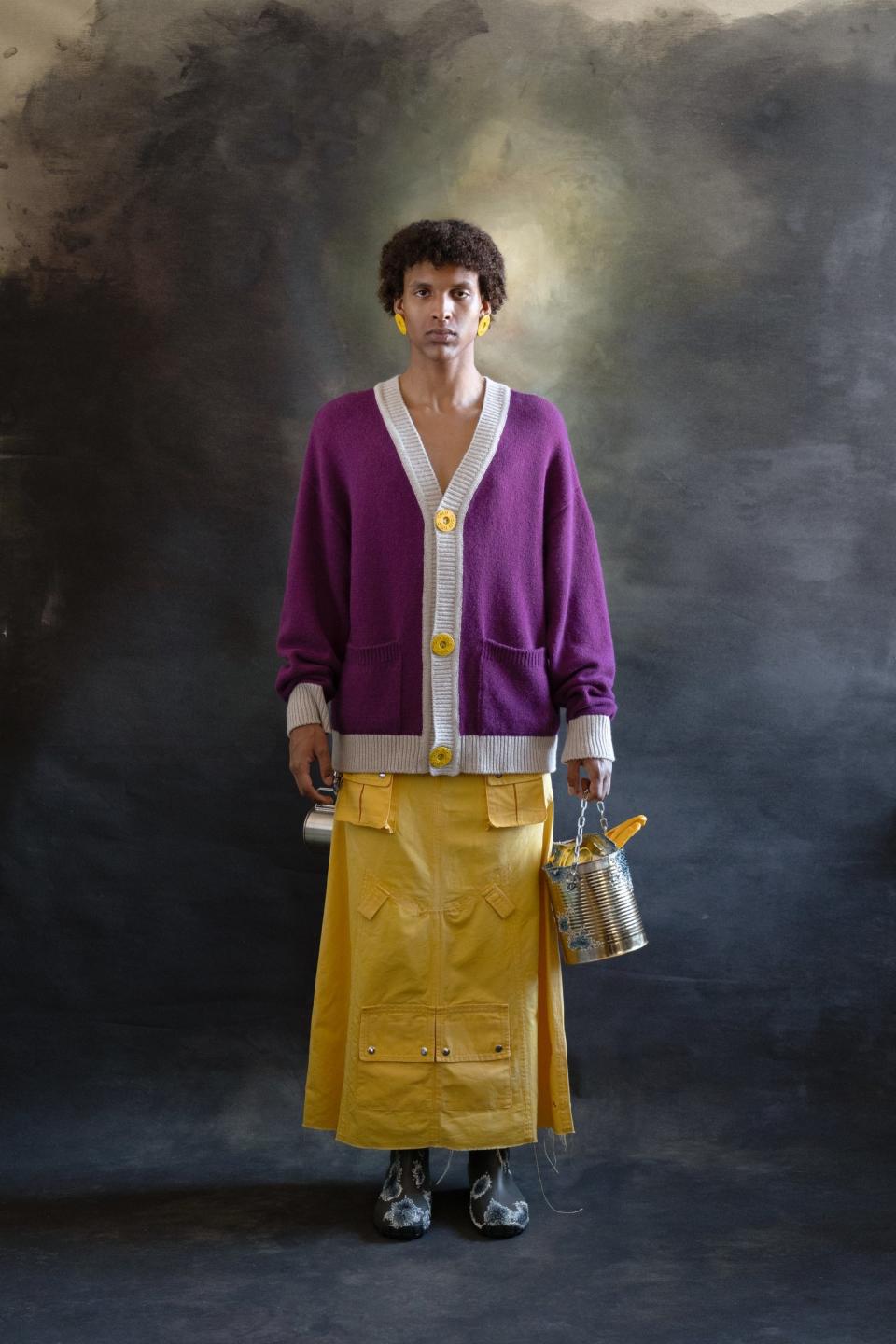
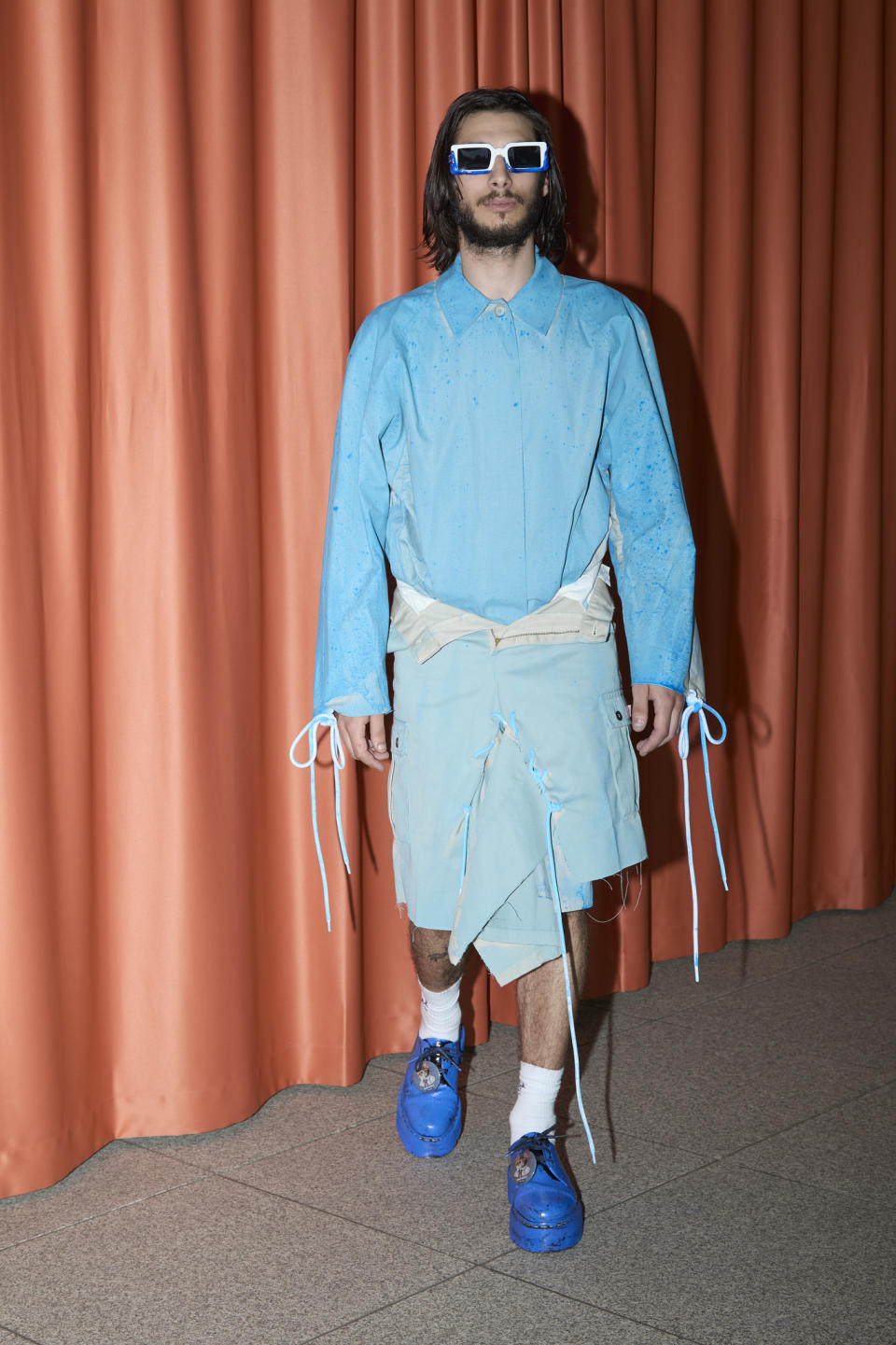
Skirt wearers themselves, Botte and Biraghi feel the appeal for men today is the same. “From a biological point of view, [skirts] paradoxically seem more attuned to the male body because of the absence of crotch seams,” they said. “It’s a sort of empowering and liberating act.”
Meanwhile, Anna Grassi, the self proclaimed “factory girl” behind streetwear label Gr10k, views skirts as a form protecting the nether region, rather than freeing it. “When we design skirts we really treat them as the most utilitarian system of sheltering the lower part of the body,” she said. Taking inspiration from her family’s legacy as workwear producers, Grassi adapted her designs from the foundry aprons used by skilled tradesmen in metal-smithing or woodworking. She added contrasting side-zips and seat belt-style waist-fastenings for a technical-looking outdoorsy finish.
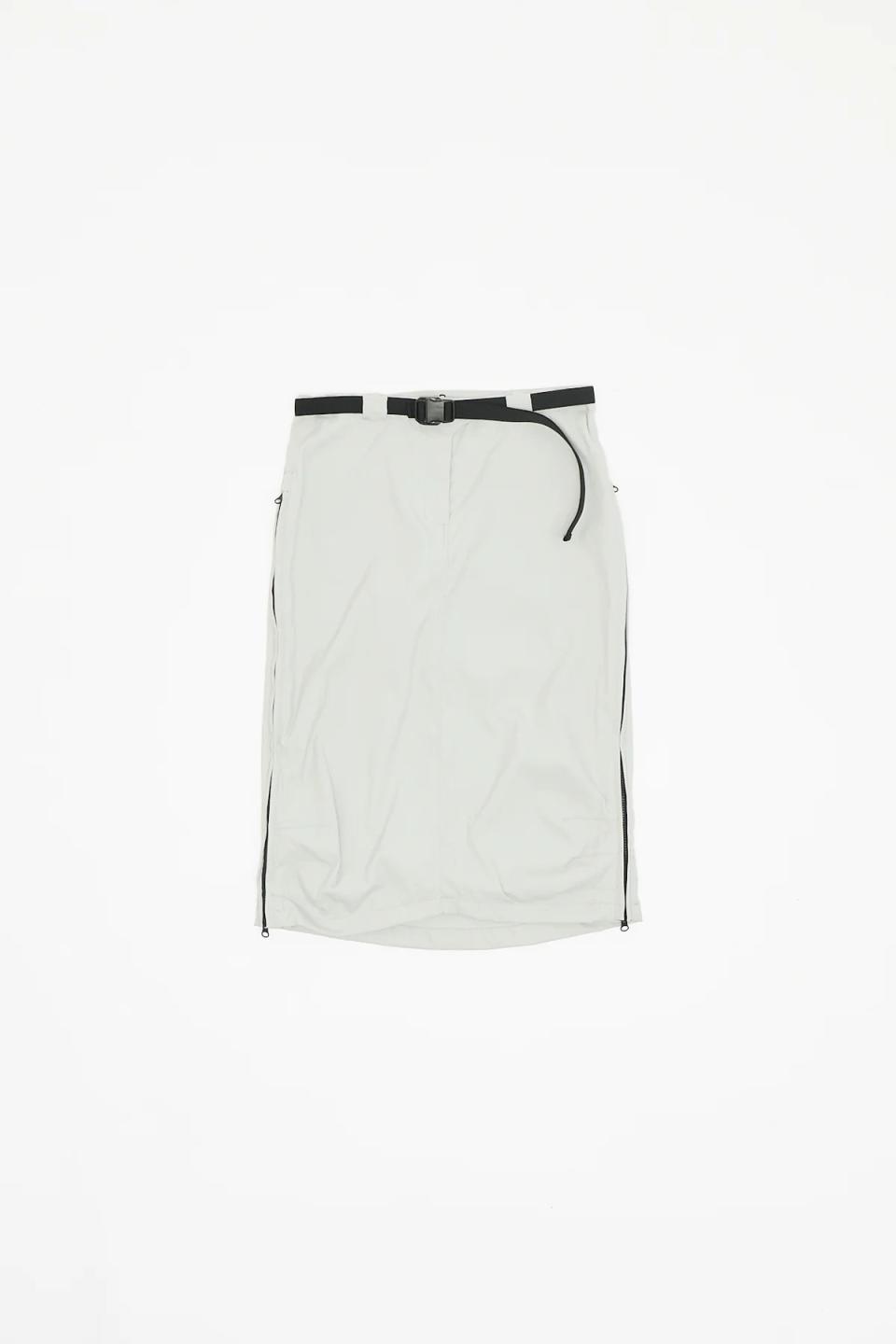
Grassi showed her skirts layered over pants (popular among the street-style set this season). But Arthur Robert has been selling a “twofer” waist apron with the pants attached since launching his brand Ouest in 2022. “They are essentially carpenter jeans, with a wide fit and a kilt-pleated panel, a super masculine staple in sturdy denim, slightly twisted,” the Paris-based designer explained.
While Robert said they are “a hot seller” for his direct-to-consumer business, retailers overall aren’t totally sold on the idea of male-specific skirts. In a 2023 WWD survey, many were unsure of the commercial viability, viewing them as more as a gimmick. “It was used mainly as a runway statement,” said Alice Feillard, men’s buying director at Galeries Lafayette, a Ouest stockist.
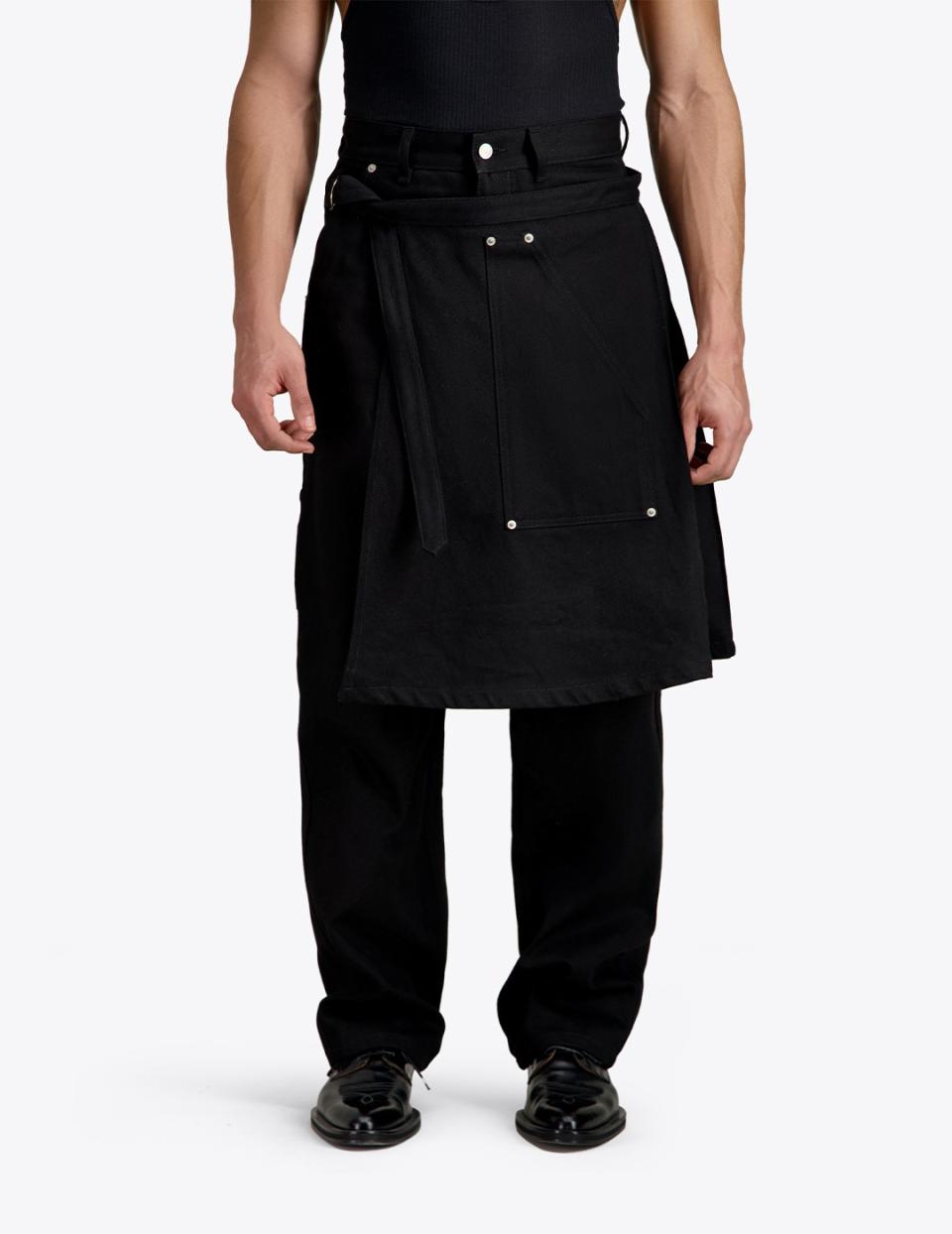
Barassi, who did not participate, expressed similar caution recently, though he admitted to a noticeable increase in the variety of skirt styles being offered.
“From a cultural and societal perspective, skirts are a reflection of the times we’re living in,” he said. “Over the past several years, data from our clients’ shopping behaviors and interests indicate that many are already shopping from both sides, going from womenswear to menswear and vice versa across different types of products.”
Asked whether there’s room to grow Ssense’s assortment of skirts for men, which currently includes options from Rick Owens, Dries Van Noten and Comme des Garçons, Barassi offered: “The short answer is: yes . . . if we see some skirts in a showroom that would resonate with our customer, we will consider [it].”
Perhaps these ones will make the cut.
Best of WWD


